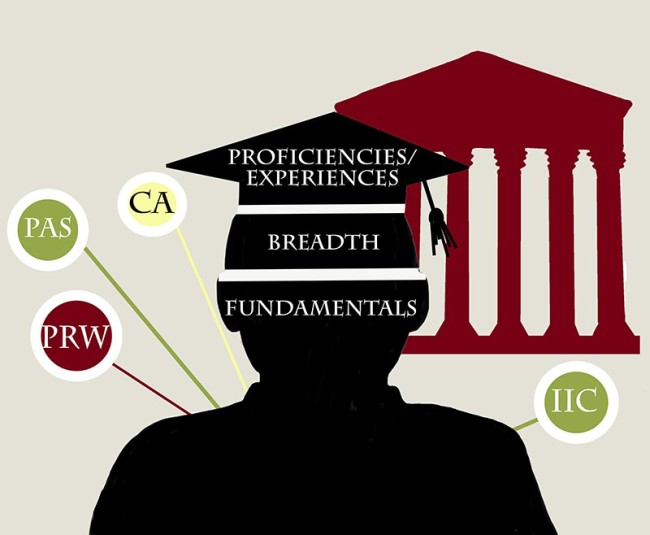The University Curriculum (UC) was originally implemented in Fall 2012 as the foundational “general education” guidelines for all SMU students. It consists of a web of foundations, pillars and proficiencies and experiences that work together to create a “holistic university background of education.”
The implementation of this complex system was met with criticism and has changed significantly since its 2012 founding following feedback from students, faculty, administrators and staff.
And now, the UC is facing even more changes to its model in a proposal called “UC 2016.” The proposal aims to fill the deficiencies found in the current version of the UC.
The new version would begin with the incoming class of 2020, who will matriculate to campus in Fall 2016.
In the current version of the curriculum, many students are able to complete the majority of their requirements by freshman year without seriously impacting their academic schedule; however, other complaints remain in regards to the scope and details of the UC.
These complaints primarily focus on the complexity of the curriculum, hours required and the lack of availability of required classes.
Eric Hawkins, a junior studying computer engineering, acknowledges the importance that the UC has in providing a general education, but says it still needs some work.
“It needs to be less inconvenient — the various requirements make it difficult for engineers to graduate in four years,” he said.
Marisol Moran, a junior studying marketing and advertising, echoes the same sentiments.
“I think some of the proficiencies miss the point and are a waste of time to be honest,” Moran said. “Many people are forced into summer school to fulfill them.”
These kinds of complaints are what spearheaded the several waves of changes to the UC.
Peter Moore, senior associate dean for general education, stated that the problem with the UC was that there were too many credits, as students needed to fulfill more than 50 credit hours to complete the required pillars.
“Originally the high credits were supposed to be overcome by high double-counting, but it just has not materialized,” Moore said.
Moore said the UC 2016 proposal will permanently reduce the number of proficiencies and experiences from eight to six.
“It also will reduce the pillar credit count from 30 down to 27 hours with more ability for double-counting,” he said.
Not only will the total credit count for the pillars be reduced, but also the actual structure for the pillars and experiences will be altered. First, the second language requirement will be moved into the foundation.
Pillars will fall into three “columns” or categorizations of pillars: Humanities & Fine Arts; Natural & Mathematical Sciences; and History, Social, & Behavioral sciences. Students will have to complete the first level of each pillar in these columns, and at least one level 2 pillar in each column grouping. This requires a total of 6 level I pillars and 3 level 2 pillars.

Moore stated that the reason behind reorganizing these pillars was twofold.
First, moving more pillars into the Science, Technology, Engineering and Math (STEM) categorization and creating a pillar for technology and mathematics will require engineers to take fewer UC hours outside of their major requirements, easing graduation requirements.
Second, eliminating the exemptions and controlling what pillar classes students can take makes course scheduling easier for the various academic departments of SMU and prevents students from leaving some UC classes under-enrolled while other UC classes do not have enough seats, Moore said.
The goal of this modification is to enable students to graduate on time and to achieve major/minor or double major combinations.
Second Year Nick McLaughlin is a student member of the University Curriculum Committee. He is confident that the UC 2016 proposal will achieve those goals.
“It will be one of the biggest and most successful changes to the UC thus far,” McLaughlin said.
Senior Emily Dombrowski, another student member of the University Curriculum Committee, believes the changes to the UC will be beneficial for students.
“Though [the new UC] might take a little while to explain, I think students will ultimately be able to grasp and be successful while on this curriculum,” she said.
The UC 2016 proposal is still under review by SMU faculty and staff.
According to Moore, the Faculty Senate began reviewing the proposal Jan. 27, and the University Curriculum Council is scheduled to review the proposal Feb. 5.
The proposal is still subject to change and is an ongoing development. The SMU Campus Weekly will continue to follow this story.








